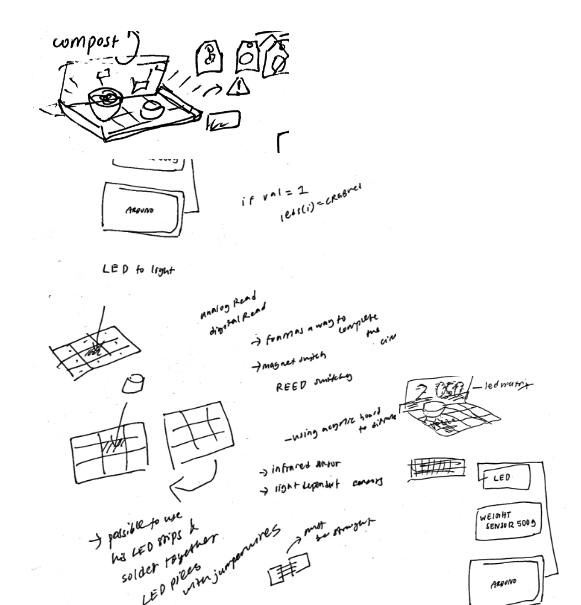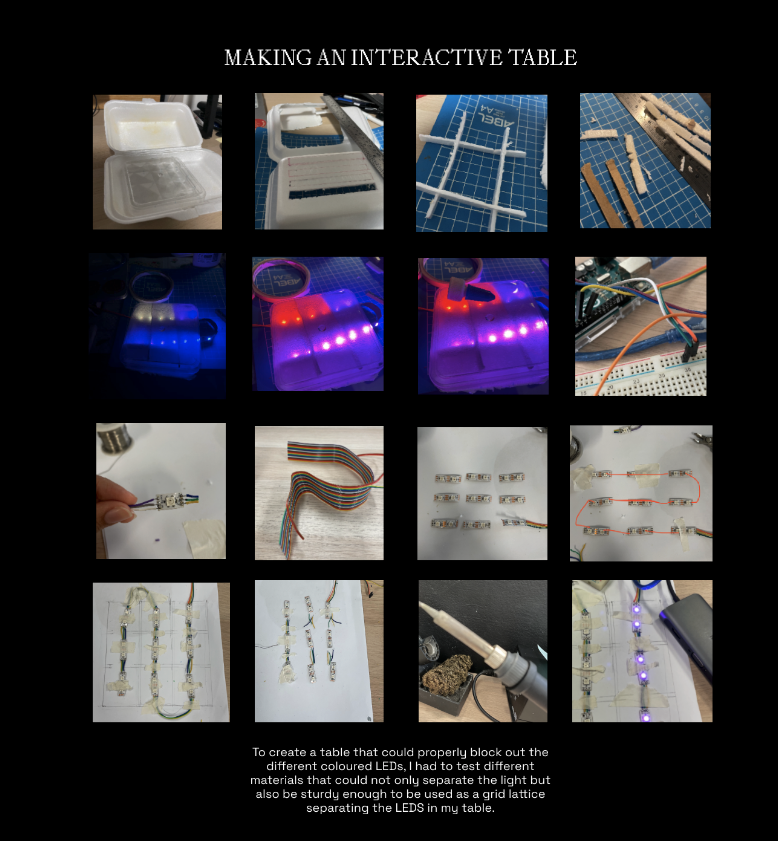Week 6
> Experimentation with Ardunio & Demonstration on LED Strips
> Solidifying my stance on HFI & Final Outcome
> Solidifying my stance on HFI & Final Outcome
FUNCTION I WANTED TO RE-CREATE:
I decided that from here, I could conceal these strips into a strip row of squares first and conceal these with materials like cardboard and use a blurred acrylic board or semi-transparent paper to diffuse the light from the LED strip. Using this switch, I could record a video displaying the first steps of how I performed this table concept which I had hoped to develop more for the final outcome.
Consultation with Vikas on Dissertation Topic
Vikas also mentioned regarding computation, to not look at this issue at a macro level and try to solve a problem as experiments may fail but it's the playfulness in design that matters more. He also mentioned a student who inject huour in projects with a topic similar to mine.
Eating Together by Justin Zhaung
Constructing the prototype
On Friday I consulted Andreas once again to borrow his soldering machine!
Only the first part of the LED strip lighted at first although all the wires were soldered to complete the circuit : ( Had to slowly check the strip to ensure I did not miss out any loose wires!
More stuff going on
The hardest part was keeping in the wire in place while soldering as it is less malleable under the amount of tape and also being wedged between the LEd, the wires stray in unpredictable directions. After a few attempts of soldering the wires, I used the plier to bend the exposed wires to stay in the correct position (within the copper plate).




